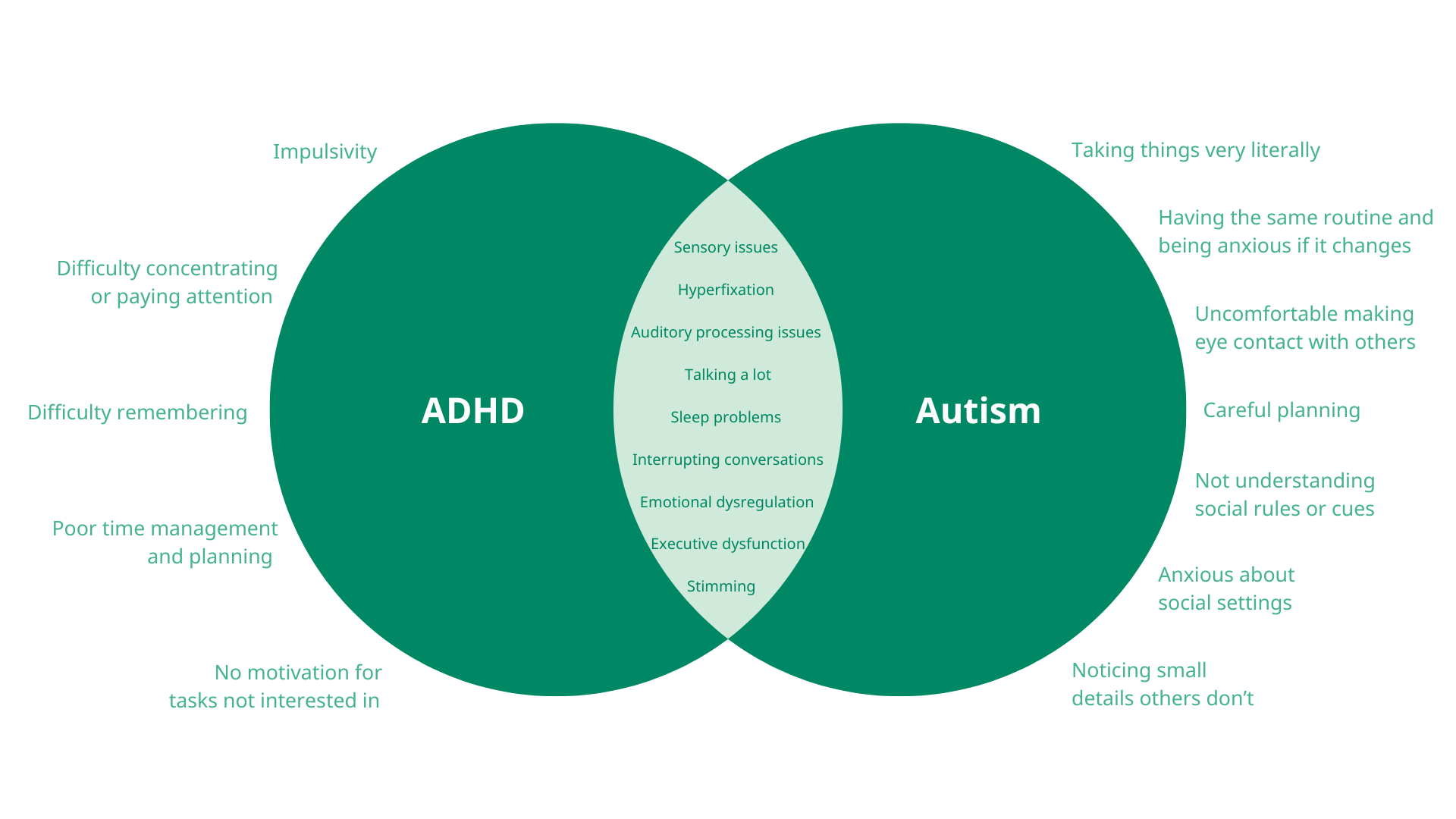More than half of adults with ADHD also live with another mental health condition, and almost 40% have two or more comorbidities.
Anxiety, depression, substance use disorders (SUD), and autism spectrum disorder (ASD) are all commonly found comorbidities. These coexisting conditions can make diagnosing ADHD more challenging for clinicians, as symptoms from different conditions can overlap and mask one another.
What should clinicians do when there are signs of comorbidities?
Assessing patients with overlapping comorbid conditions is challenging because symptoms can mimic one another. For example, inattentive ADHD symptoms can look a lot like depression or anxiety, emotional dysregulation can mimic bipolar disorder mood swings, and social withdrawal during times of stress could be mistaken for autism-related behaviors.
Clinicians working with comorbid patients may need to carry out a wider assessment process. This means ruling each condition in or out and trying to identify the root cause of symptoms before arriving at an overall diagnosis.
“Children with ASD tend to be very literal. They tend to miss idioms…They have difficulties with that type of language, so, if you’re using metaphors or similes with them, they may not understand them right. So, that can be a language barrier.”
- Ryan Martin, Qbtech
Differences and similarities between ADHD and Autism
A co-diagnosis of ADHD and autism is not uncommon. Around 40% of children with autism also meet the criteria for an ADHD diagnosis.
Both ADHD and ASD can lead to symptoms of executive dysfunction and social difficulties. However, there are nuances in how they present, and they require different treatment responses.
In a recent webinar, our clinical advisors Jess Brunet (advanced nurse practitioner and non-medical prescriber in the UK) and Ryan Martin (former neuropsych tech and autism practitioner in the US) discuss differences and similarities between ADHD and autism and clinical red flags to watch out for.
Ryan highlights that social reciprocity can be a key indicator of ASD. Patients with ASD may struggle to give others in the conversation space to speak and become fixated on their own topic.
“An individual who is autistic may be quite fixated on their own train of thought. They have a sequence of things that they would like to speak to you about and are rolling through the sequence.”
By contrast, a patient with ADHD is likely to flit between topics and be more tangential in conversation.
Ryan highlights another red flag, which is how a patient copes with more complex language ideas like metaphors or similes.
Video
Tips on the co-diagnosis of ADHD and autism
For clinicians, observing these subtle nuances between conditions is essential to make a valid diagnosis. Non-verbal cues, social reciprocity, and the use and understanding of language can all help distinguish between comorbidities.
When two or more symptoms are present
Where it becomes more complex is when the same symptom may be present in both conditions. For example, hyperactivity and impulsivity in ADHD may look very much like sensory-seeking behaviors in ASD, like rocking or hand flapping.
However, to the patient, they serve a different function. Such behaviors in a child with ADHD are often an expression of trying to “get energy out”. By contrast, in a child with ASD the symptoms may be a self-soothing mechanism to deal with overwhelm.
Importance of developmental history
ADHD is a neurodevelopmental disorder, meaning symptoms must have been present since childhood. Understanding a patient’s early development is critical when assessing and treating ADHD. A thorough developmental history helps clinicians differentiate symptoms from comorbid conditions like autism, learning disorders, or anxiety.
The role of environment and symptom setting
When dealing with comorbidities, clinicians need to look at the environment where symptoms are observed, as well as the symptoms themselves, to try and assess the cause.
For treating ADHD and comorbid conditions like ASD, a multimodal treatment approach may give the best outcome. This could include combining medication with cognitive behavioral therapy and occupational therapy.
Medication management
How medications interact will also need to be considered. Stimulant medications prescribed for ADHD may exacerbate anxiety symptoms, whilst anxiety or depression medications may have little impact on ADHD symptoms. For clinicians, finding the right treatment plan for a patient is often an iterative process, with several tweaks and changes to arrive at an effective medication plan. This is especially true for patients with comorbidities, who will likely need greater support in this area.

